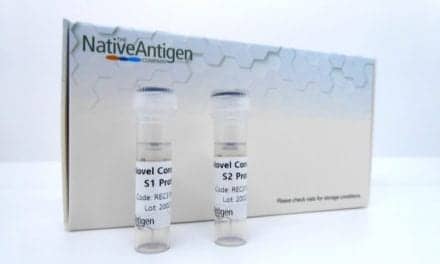The infectious disease expert shares her perspective on new technologies, persistent barriers, and the role of labs in keeping care connected to patients.
For Denise Heaney, PhD, every diagnostic test represents a patient, and that philosophy has guided her work across more than 20 years in clinical diagnostics.
Trained as a pathologist, Heaney has worn many hats: serving as an inspector for the College of American Pathologists (CAP), advancing public health initiatives, and now shaping strategy as chief medical partner at Roche Diagnostics. Her expertise in infectious diseases, particularly respiratory and sexual health, places her at the intersection of science, patient care, and public health.
Heaney spoke with CLP about the advances reshaping infectious disease testing, from multiplex assays to digital health tools. She also speaks candidly about the challenges that persist—including stigma, access, and workforce training—and offers her perspective on how laboratorians can keep the patient front of mind as technology continues to evolve.
CLP: There seems to be a new biomarker discovered or test being developed almost weekly. Why are we seeing an explosion in new infectious disease diagnostics?
Heaney: The COVID-19 pandemic underscored the pressing need for rapid and accurate diagnostic tools to track, treat, and control infectious disease outbreaks. It spurred unprecedented advancements in development and implementation, such as the National Institutes of Health Rapid Acceleration of Diagnostics program, alongside widespread adoption of new technologies, including point-of-care testing and at-home self-collection kits.
The pandemic catalyzed significant investments and support from the Food and Drug Administration and international organizations aimed at strengthening diagnostic advancement and infrastructure.
Beyond the immediate challenges of the pandemic, the ongoing global burden of emerging and re-emerging infectious diseases—including tuberculosis, HIV/AIDS, hepatitis, sexually transmitted infections, and respiratory illnesses—highlights the critical demand for advanced diagnostic solutions. These tools enable the timely detection of infections, facilitate effective treatment, and help curb their spread, ultimately improving patient outcomes and reinforcing public health initiatives.
The true innovation lies in transforming how we test—utilizing syndromic testing, a form of multiplex testing that detects multiple pathogens causing similar symptoms—to swiftly identify, diagnose, and treat with a single test rather than multiple individual tests.
CLP: As a former CAP inspector, what has been the most significant diagnostic breakthrough in the past decade?
Heaney: Historically, remote or “tele” care was often seen as secondary to traditional, in-person care. However, the post-pandemic world has dramatically reshaped this perspective. COVID-19 has demonstrated that care delivered outside traditional healthcare settings can be both reliable and essential in meeting patient needs. Innovations like self-collection for HPV and STIs, as well as digital health solutions, are making it easier than ever to expand access and provide care to patients anywhere.
This shift demonstrates that the future of healthcare will no longer be confined to the walls of clinics or hospitals but will embrace flexibility, accessibility, and patient-centered approaches. By moving beyond reliance on samples brought exclusively into lab settings, we can now reach more people in need, address care gaps, and gain a clearer understanding of disease prevalence.
The broad adoption of real-time molecular polymerase chain reaction in decentralized settings has marked a transformative leap in diagnostics, delivering exceptional precision and efficiency. Multiplex assays, which are syndromic in nature, can detect multiple pathogens in a single test, further revolutionizing the process by significantly reducing testing times and enhancing efficiency in both clinical laboratories and point-of-care settings.
Meanwhile, digital health technologies have emerged as game changers, enhancing diagnostics through data-driven insights, providing clinical decision support to improve diagnostic accuracy, and expanding access to innovative tools that empower patient care.
CLP: With the advances we’ve seen, there are still challenges. For example, in the area of sexual health, is it a case of tests not keeping up or the social stigma surrounding some diseases that is limiting testing?
Heaney: The diagnostic testing is there and continuing to expand, but there is still stigma and fear when it comes to STI testing.
Conventional STI testing involves sending samples to a centralized laboratory, which can potentially result in delayed diagnosis and treatment. These delays can result in patients being lost to follow-up and over-treatment with broad-spectrum antibiotics, thereby contributing to antimicrobial resistance. Untreated STIs can have serious consequences, including infertility and increased HIV transmission. Shifting testing beyond traditional settings, like at the point of care, is advancing the test-to-treat model and enabling more timely diagnosis and treatment for patients.
The expansion of point-of-care testing into decentralized settings, such as clinics, pharmacies, and nursing homes, enables substantial advantages to patient care, enabling quicker diagnoses and more timely treatment decisions. However, a key challenge to successful implementation is the concern over the shortage of adequately trained personnel to perform these tests with precision, even when they are CLIA-waived.
CLP: How can laboratorians and pathologists help to keep and strengthen the human connection, remembering that a test is a patient?
Heaney: When a patient-centric or “patient behind every sample” philosophy is adopted into every aspect of laboratory culture, diagnostic testing can serve as a bridge to better health, rather than a source of stigma or a barrier to care. Every result represents an individual with unique circumstances, fears, and hopes. Promoting this mindset among lab staff can foster connection, empathy, and a commitment to accuracy and efficiency.
Clear, concise, and compassionate communication is essential when lab results inform a diagnosis or treatment plan. The language used to convey information to clinicians (and subsequently to patients) should be empathetic and free of jargon that could be misinterpreted or contribute to patient anxiety or fear.
Diagnostic laboratory systems play a significant role in expanding access to essential testing services. By engaging directly with policymakers and presenting data and real-life case studies, they can demonstrate the value of laboratory patient outcomes and the potential reduction of healthcare costs through early diagnosis and treatment.
Advocating for community-based testing sites, affordable test pricing, and patient education in health management and disease prevention can help demystify testing and highlight its positive impact. In an age of widespread information (and misinformation), lab professionals play a vital role in dispelling myths while providing accurate, evidence-based information about infectious diseases and diagnostic testing.
Fostering strong collaboration among laboratorians, pathologists, clinicians, and public health officials ensures that diagnostic testing strategies are patient-centered and address the real-world needs of diverse communities, ultimately benefiting the broader healthcare system.
CLP: What do you think the next five to 10 years will look like for infectious disease diagnostics? Are the breakthroughs going to continue—or will we see a “cooling off” period?
Heaney: Based on current trends and expert analysis, the next five to 10 years for infectious disease diagnostics are likely to be characterized by continued breakthroughs and significant advancements, rather than a “cooling off” period. Advances in technology will ultimately revolutionize the monitoring of future infectious disease outbreaks and the identification of emerging pathogens, reshaping the way public health threats are detected, tracked, and managed.
At-home collection solutions and expanded sample types, particularly for STIs, will shape the future of infectious disease diagnostics. Developing new diagnostics to address one of the most significant STI burdens today—syphilis—will be a critical step forward.
Artificial intelligence and machine learning are also set to revolutionize diagnostics. These technologies will enable more effective analysis of complex data, outbreak prediction, improved diagnostic accuracy, and the optimization of treatment strategies.
Additionally, advancements in wearable diagnostics, microfluidics, lab-on-a-chip technologies, and cutting-edge biosensors are on track to transform the detection and monitoring of infectious diseases, marking a new era of precision healthcare.
CLP: What areas of infectious disease diagnostics are you most excited about?
Heaney: I am excited about advancing new diagnostic solutions to address unmet needs in healthcare, with syphilis serving as a prime example. There is a critical need for innovative diagnostics to enhance detection and diagnosis, ultimately reducing transmission rates and lowering disease prevalence within our communities.
I am equally excited about expanding access to testing beyond centralized lab settings. Enabling more people to access testing and real-time diagnostic solutions will bring us closer to equitable healthcare for all.
ID 226152712 © Piyapong Thongcharoen | Dreamstime.com





